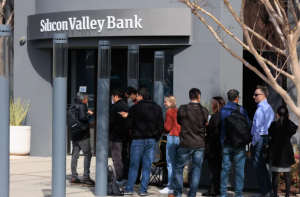
How the Fed’s stress tests failed to stop a banking crisis
CFOs have always used scenario planning and stress testing. But in the past few years, from the pandemic to inflationary pressures to rising interest rates, I think it’s safe to say these methods have gotten a workout.
When it comes to the fall of Silicon Valley Bank last week, the bank’s models to predict risk and performance are said to have been flawed. The Federal Reserve, the primary federal supervisor of the SVB, issued a warning to the bank over its risk-management systems back in 2019, the Wall Street Journal reported. And some short sellers knew SVB was in trouble months ago, Fortune reported.
There were red flags, yet, SVB’s collapse wasn’t prevented. A new report by Fortune’s Shawn Tully provides some insight into the situation: “The Fed’s ‘stress tests’ were supposed to save banks from the exact crisis now engulfing markets. Here’s how they were so spectacularly wrong.”
“In the stress tests, the Fed thought the problem would be falling GDP; defaults on commercial real estate loans; a spike in unemployment,” Thomas Hogan, former chief economist at the Senate Banking Committee and now a senior fellow at the American Institute for Economic Research, told Fortune. “Instead, we got the opposite of that, a good economy, low joblessness, and few defaults. The things the Fed thought would be a problem are good now. And the thing they deemed not to be important, the risk of a big rise in rates, is causing the failures in the financial system.”
The stress tests themselves weren’t predictive of what the banks would face, and the report provides some background. After the 2008 financial crisis, the Dodd-Frank Wall Street Reform and Consumer Protection Act was passed to prevent excessive risk-taking by banks. In 2018, a bill was passed that raised the threshold from $50 billion in assets to $250 billion in assets for when companies qualify as a “systemically important financial institution.”
“The $250-billion-and-up banks are still stress-checked annually, and the central bank put the $100-250 billion group on a bi-annual cycle, where they’re measured only in the even years,” Tully writes. “A rule called Standardized Liquidity Ratio gets waived for the mid-sized banks, meaning they can hold less liquid capital than for the top tier lenders.” And “Silicon Valley Bank didn’t fulfill $100 billion mark in average assets until the end of 2021, and therefore wasn’t included in the 2022 test, nor had it ever endured a Fed exam.”
And crucially, the Fed’s “severe stress” scenarios completely missed the huge rise in rates, Tully writes. “The Fed provided two sets of forecasts,” he explains. “The ‘baseline’ expresses what the central bank sees as the most likely outlook, while the ‘severely adverse’ playbook posits the most negative future the Fed deems possible. Both scenarios cover from Q1 of 2022 through Q1 of 2025.”
Tully analyzed what the Federal Reserve rated in February 2022 as likely and worst-case for the first quarter of 2023. “The Fed got baseline scenario pretty much right in predicting a healthy economy, and more or less hitting the marks on robust GDP growth and low unemployment,” he writes. “But it was spectacularly wrong on inflation and interest rates.” Unbelievable as it seems now, the Fed’s most stressful scenarios had the CPI running at sub-2% all the way into 2025. As Tully writes: “And as we’ve seen with SVB and First Republic, soaring rates can turn what look like stable regional banks into hotbeds of risk overnight.”
Read the complete analysis and the outlook for the road ahead here.
Stress testing is a critical part of risk management for sure. I’d love to hear more about your own experience with stress testing—including how it helped you prepare (and what you may have missed).
Sheryl Estrada
[email protected]
*Quick note: The next Fortune Emerging CFO virtual event, “Addressing the Talent Gap with Advanced Technologies,” presented in partnership with Workday (a CFO Daily sponsor), will take place from 11 a.m.-12 p.m. EST on April 12. Matt Heimer, executive editor of features at Fortune, and I will be joined by Carolina Dybeck Happe, CFO at GE; Katie Rooney, CFO at Alight Solutions; and Andrew McAfee, cofounder and codirector of MIT’s Initiative on the Digital Economy and principal research scientist at MIT Sloan School of Management. Click here to learn more and register
